Miniature Pinschers and Dobermans are two dog breeds that share a similar appearance, leading many people to wonder if they are related. Are Miniature Pinschers Related to Dobermans? Both breeds have short, sleek coats and pointy ears, and they are both classified as working dogs. However, despite their similarities, there are some key differences between the two breeds.

Miniature Pinschers, also known as Min Pins, are a small breed that originated in Germany. They were originally bred to hunt rats, and they are known for their high energy and playful personalities. Dobermans, on the other hand, are a larger breed that were originally bred as guard dogs. They are known for their loyalty and intelligence, and they are often used as police dogs.
Despite their differences, there are some similarities between Miniature Pinschers and Dobermans. Both breeds are known for their athleticism and agility, and they require regular exercise to stay healthy. Additionally, both breeds are known for their loyalty to their owners, making them popular pets for families and individuals alike.
Historical Origins
The Miniature Pinscher and the Doberman Pinscher are two distinct breeds, but they do share some similarities in their historical origins.
Development of Miniature Pinscher
The Miniature Pinscher originated in Germany in the 19th century. It is believed that the breed was developed by crossing the German Pinscher, the Italian Greyhound, and the Dachshund. The breed was originally used as a rat catcher and watchdog, and it quickly became popular among German nobility.
Evolution of Doberman Pinscher
The Doberman Pinscher was also developed in Germany in the late 19th century. The breed was created by Karl Friedrich Louis Dobermann, a tax collector who wanted a dog that could protect him while he made his rounds. Dobermann crossed several breeds, including the German Pinscher, the Greyhound, and the Manchester Terrier, to create a dog that was loyal, intelligent, and protective.
While the Miniature Pinscher and the Doberman Pinscher share some common ancestors, they are not closely related. The Miniature Pinscher is a small breed, while the Doberman Pinscher is a large breed. Additionally, the Miniature Pinscher was developed primarily as a companion dog, while the Doberman Pinscher was developed as a working dog.

Overall, while the Miniature Pinscher and the Doberman Pinscher may share some similarities in their historical origins, they are two distinct breeds with their own unique characteristics and traits.
Physical Characteristics
Comparing Size and Appearance
Miniature Pinschers and Dobermans may look similar at first glance, but they are quite different in size and appearance. Miniature Pinschers are small dogs, weighing between 8 and 10 pounds and standing around 10 to 12 inches tall at the shoulder. Dobermans, on the other hand, are much larger, weighing between 60 and 100 pounds and standing around 24 to 28 inches tall at the shoulder.
In terms of appearance, Miniature Pinschers have a sleek, muscular body with a short, smooth coat that comes in a variety of colors including black, chocolate, and red. They have erect ears and a high-set tail that is usually docked. Dobermans, on the other hand, have a more substantial build with a long, lean body and a short, smooth coat that is usually black, blue, or fawn with rust-colored markings. They also have erect ears and a docked tail.
Distinctive Markings and Colors
One of the most distinctive features of the Miniature Pinscher is their coat color and markings. They can come in solid colors such as black, chocolate, and red, or they may have tan or rust markings on their face, chest, and legs. Dobermans, on the other hand, have a more limited range of colors and markings. They are usually black, blue, or fawn with rust-colored markings on their face, chest, and legs.
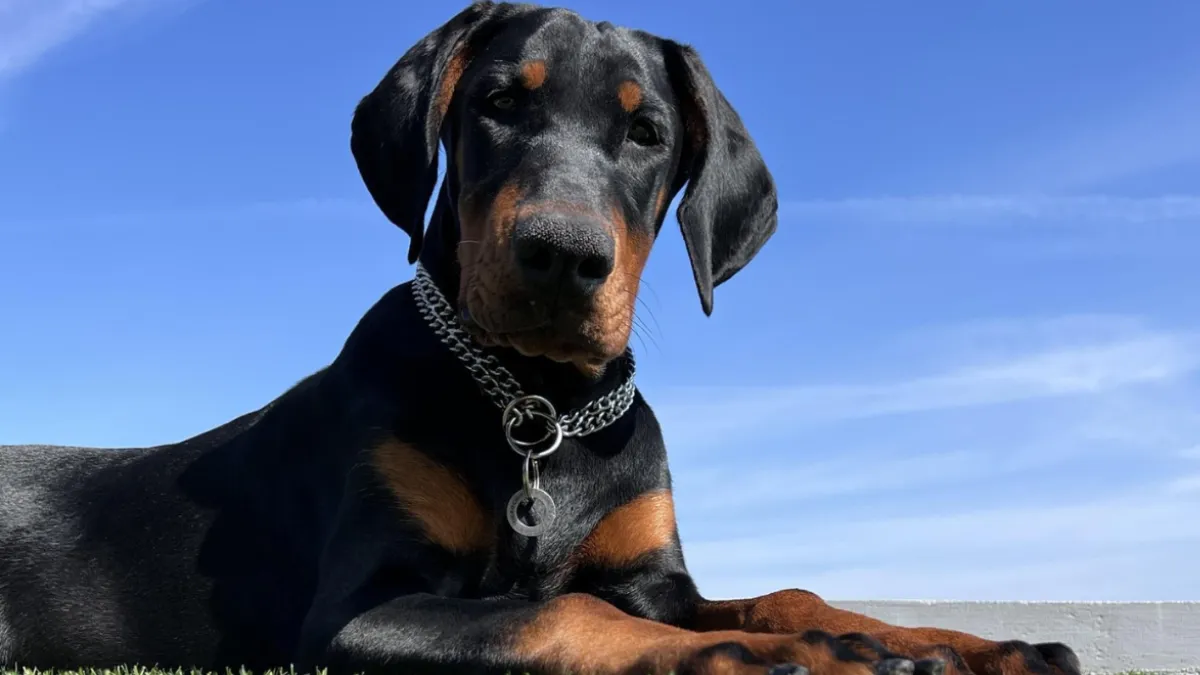
In addition to their coat color and markings, Miniature Pinschers and Dobermans have other physical traits that set them apart. For example, Miniature Pinschers have a short, sturdy neck and a deep chest, while Dobermans have a long, elegant neck and a broad, deep chest. They also have different eye shapes, with Miniature Pinschers having round, dark eyes, and Dobermans having almond-shaped eyes that are usually brown.
Overall, while Miniature Pinschers and Dobermans may share some physical characteristics, such as their erect ears and docked tails, they are quite different in terms of size, appearance, and other physical traits.
Temperament and Personality
Miniature Pinschers and Dobermans are two breeds that share a lot of similarities in their temperament and personality. Both breeds are known for their loyalty, protectiveness, and independence. However, there are also some notable differences between the two breeds.
Behavioral Traits
Miniature Pinschers are known for their friendly and active personalities. They are intelligent, playful, and energetic, making them great companions for active individuals or families. They are also loving and affectionate and tend to be curious and fearless.
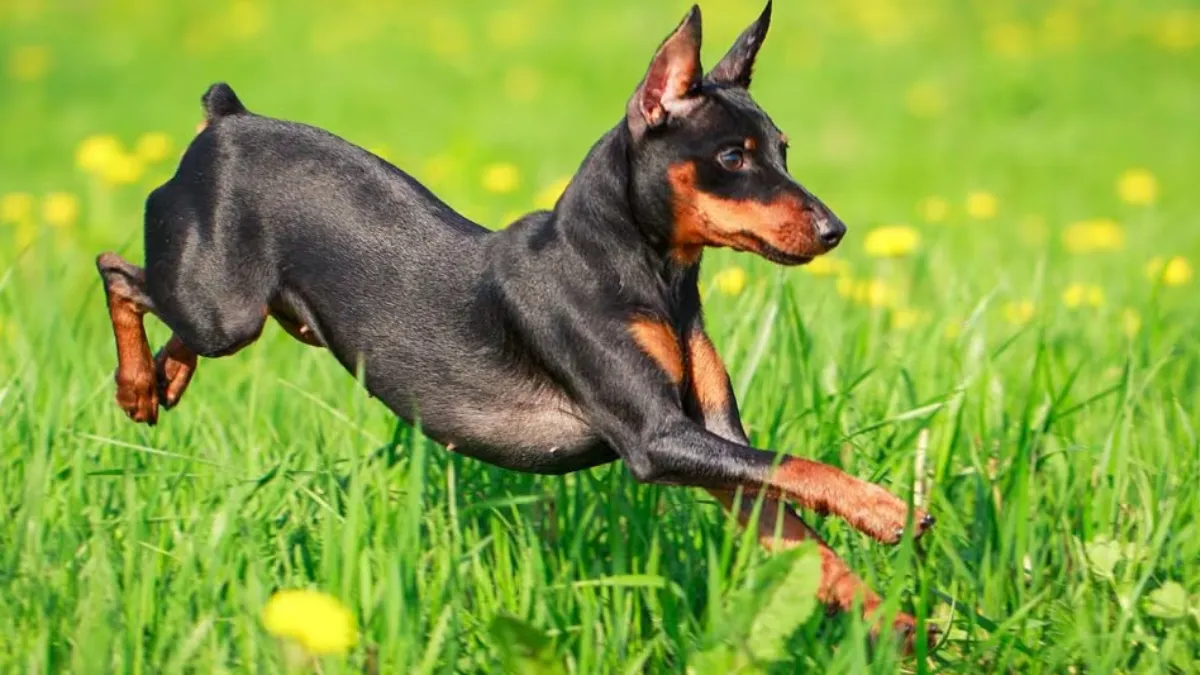
Dobermans, on the other hand, are known for their alert and territorial personalities. They are intelligent and headstrong and can be dominant if not properly trained and socialized. They have a strong prey drive and can be possessive of their owners and territory.
Socialization and Interaction
Both Miniature Pinschers and Dobermans require early socialization and training to ensure they develop into well-behaved and well-adjusted dogs. Miniature Pinschers tend to be more social and outgoing with strangers, while Dobermans can be more reserved and cautious.
It is important to note that both breeds require a lot of attention and interaction from their owners. They thrive on human companionship and can become destructive or develop separation anxiety if left alone for extended periods.
Overall, while Miniature Pinschers and Dobermans share some similar traits, they also have distinct differences in their personalities and temperaments. Potential owners need to consider these differences and choose the breed that best fits their lifestyle and personality.
Health and Care
Common Health Concerns
Miniature Pinschers and Dobermans have some common health concerns. Both breeds are prone to progressive retinal atrophy (PRA), a degenerative eye disease that can lead to blindness. Additionally, both breeds can suffer from hip dysplasia, a condition where the hip joint does not develop properly, leading to arthritis and pain. Wobbler syndrome, a spinal cord compression disorder, is also more common in these breeds.
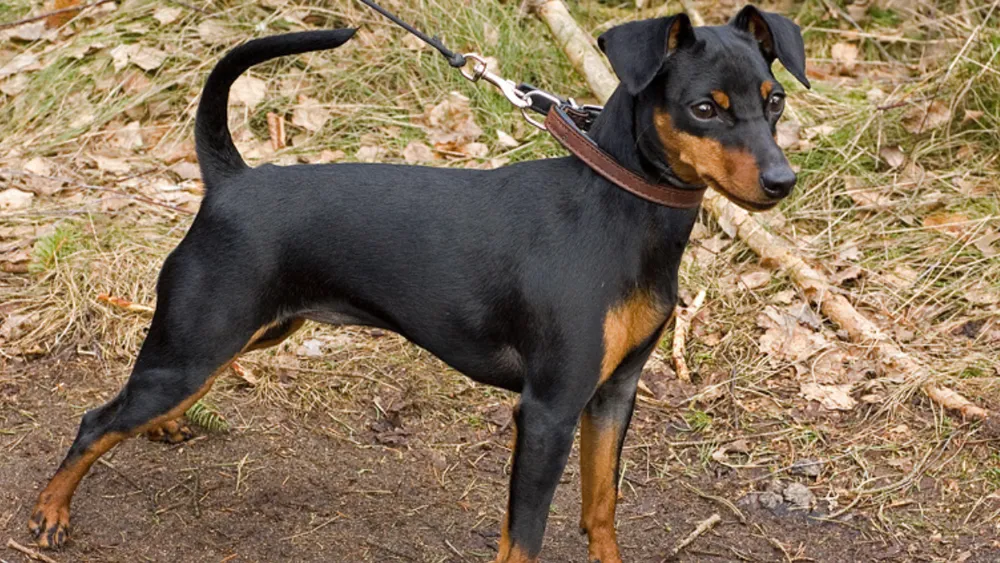
Owners of Miniature Pinschers and Dobermans should be aware of the signs and symptoms of these conditions and take their dogs to the vet regularly for checkups. Early detection and treatment can help manage these health concerns and improve the quality of life for the dogs.
Grooming and Maintenance
Miniature Pinschers and Dobermans have different grooming needs. Miniature Pinschers have a short, smooth coat that requires minimal grooming. They only need occasional brushing to remove loose hair and dirt. Dobermans, on the other hand, have a short, sleek coat that sheds moderately. They require more frequent brushing to keep their coat healthy and shiny.
Both breeds benefit from regular exercise to maintain their health. Miniature Pinschers need daily exercise to prevent obesity and keep their energy levels in check. Dobermans are also energetic dogs that need plenty of exercise to stay healthy and happy.
Owners of Miniature Pinschers and Dobermans should also be aware of bloat, a life-threatening condition where the stomach twists and traps gas. This condition is more common in deep-chested breeds like Dobermans. Owners can help prevent bloat by feeding their dogs smaller, more frequent meals and avoiding exercise immediately after meals.
Overall, Miniature Pinschers and Dobermans are both healthy breeds with some common health concerns. With proper care and attention, these dogs can live long, healthy lives.
Training and Exercise
Training Techniques
Miniature Pinschers are highly intelligent and eager to please, making them relatively easy to train. However, they can also be stubborn at times, so consistency and patience are key when training these dogs. Positive reinforcement techniques, such as using treats and praise, are recommended to encourage good behavior. Harsh training methods should be avoided, as they can lead to fear and aggression in these small dogs.
Obedience training is important for Miniature Pinschers, as they can tend to be independent and willful. Basic commands such as "sit," "stay," and "come" should be taught early on, and reinforced consistently. Socialization is also important, as it helps to prevent shyness and aggression towards strangers.
Exercise Requirements
Despite their small size, Miniature Pinschers are energetic dogs that require regular exercise. Daily walks or playtime in a fenced yard can help to meet their exercise needs. They also enjoy agility training, which can help to burn off excess energy and keep them mentally stimulated.
It is important to note that Miniature Pinschers are compact dogs that do not require a lot of space to exercise. However, they do require attention and playtime with their owners to prevent boredom and destructive behavior. It is recommended that they receive at least 30 minutes of exercise per day, but they can handle more if given the opportunity.
Overall, Miniature Pinschers are trainable and energetic dogs that require regular exercise and attention. Positive reinforcement techniques and consistency are recommended for training, and daily walks or playtime can help to meet their exercise needs.

Breed Relationships
Genetic Connections
Miniature Pinschers and Dobermans share a common ancestry. The Miniature Pinscher is believed to have descended from the German Pinscher, which is also a common ancestor of the Doberman Pinscher. The Doberman Pinscher was created in the late 19th century by Karl Friedrich Louis Dobermann, a German tax collector who wanted a dog that was both a loyal companion and a fierce guard dog.
The Miniature Pinscher, on the other hand, was developed as a companion dog and a ratter. While the two breeds have similar genetic backgrounds, they have been bred for different purposes and have distinct characteristics.
Interaction with Other Breeds
Miniature Pinschers and Dobermans are both social dogs that enjoy the company of their owners and other dogs. However, they have different temperaments and energy levels. Miniature Pinschers are known for being lively and playful, while Dobermans are more serious and reserved.
When it comes to interacting with other breeds, both Miniature Pinschers and Dobermans can be friendly and outgoing. However, Dobermans are often used as guard dogs and may be more protective of their owners and their territory than Miniature Pinschers.
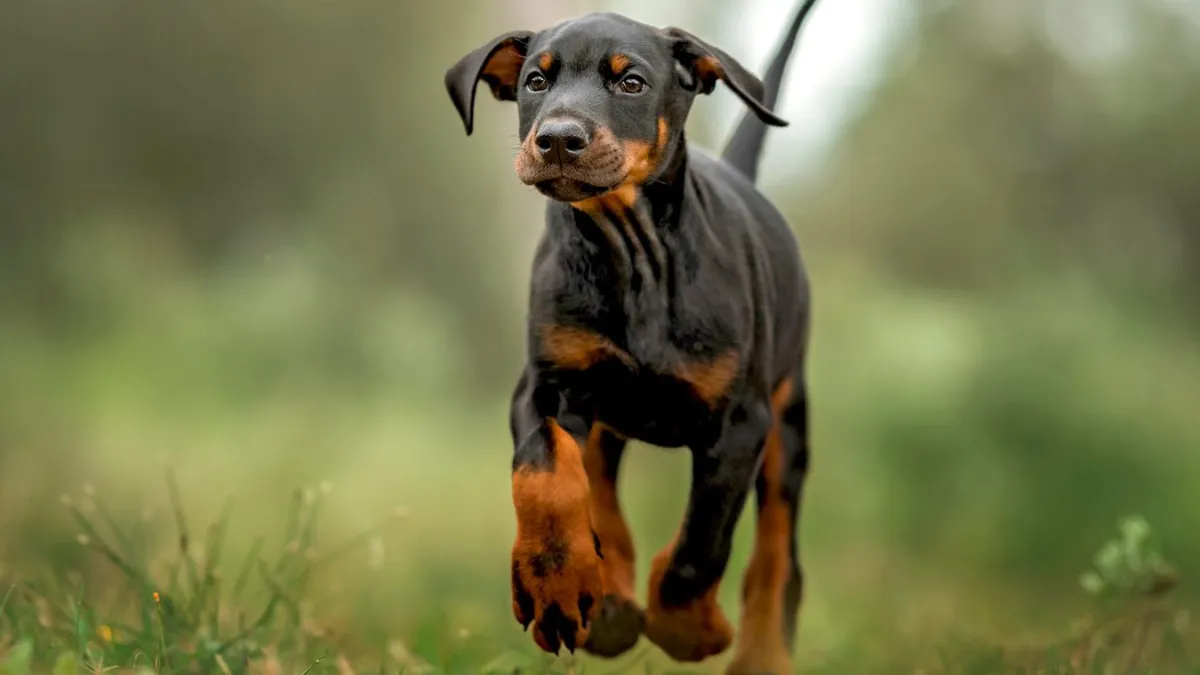
Overall, while Miniature Pinschers and Dobermans share a genetic connection, they have been bred for different purposes and have distinct personalities and characteristics. It is important to consider these differences when choosing a breed that is right for your lifestyle and family.
Breed Popularity and Culture
Miniature Pinscher in Society
The Miniature Pinscher, also known as the "King of Toys," is a small and athletic breed that has gained popularity over the years. These dogs are known for their high energy and playful nature, making them a great addition to any family.
Owners of Miniature Pinschers often rave about their loyalty and affectionate personalities. They are known to form strong bonds with their owners and are protective of their families. However, they can be wary of strangers and other animals, including cats.
The American Kennel Club (AKC) recognizes the Miniature Pinscher as a toy breed and has included them in their registry since 1925. This recognition has helped increase their popularity and has led to more people becoming interested in owning this breed.
Doberman's Role and Recognition
The Doberman Pinscher is a larger breed that is often associated with protection and security. They are known for their loyalty and intelligence, making them a popular choice for police and military work.
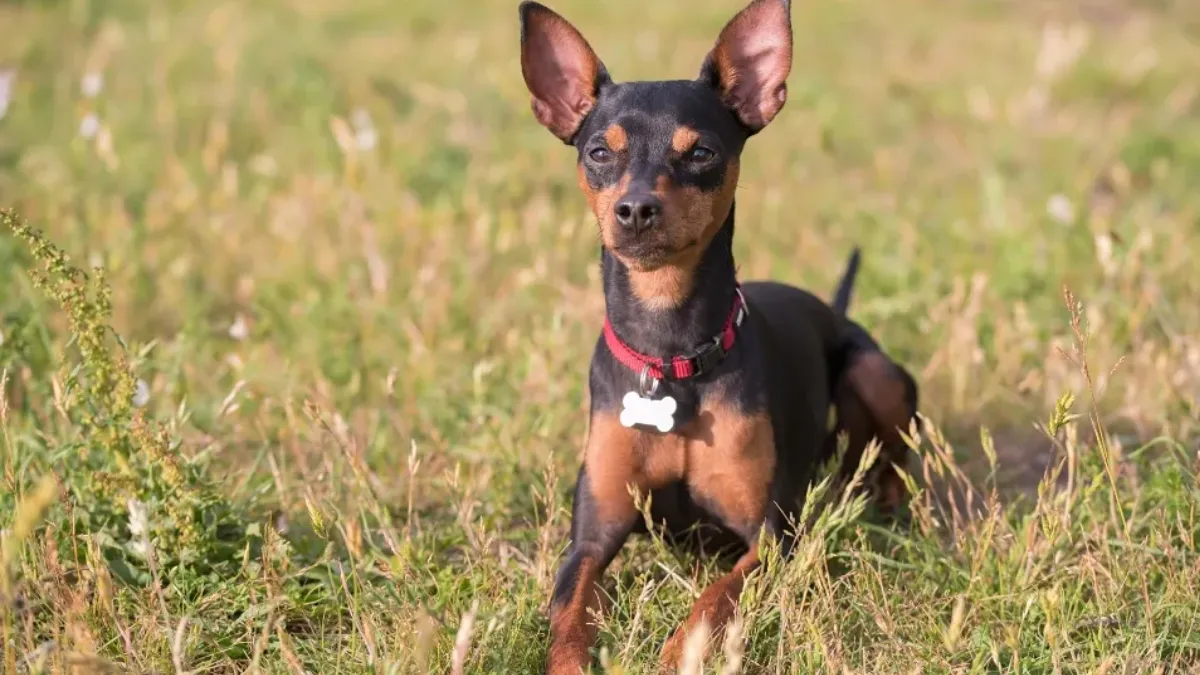
The AKC recognizes the Doberman Pinscher as a working breed and has included them in their registry since 1908. This recognition has helped increase their popularity and has led to more people becoming interested in owning this breed.
Despite their reputation as a guard dog, Doberman Pinschers can make great family pets. They are known to be affectionate and loyal to their owners but can be wary of strangers.
In conclusion, while Miniature Pinschers and Doberman Pinschers may share some similarities in appearance, they are two distinct breeds with different purposes and personalities. However, both breeds have gained popularity over the years and have become beloved by many owners.
Practical Considerations
Choosing the Right Breed for You
When considering getting a dog, it is important to choose the breed that is right for you. Miniature Pinschers and Dobermans may look similar, but they have different temperaments and needs. Miniature Pinschers are known for being energetic, playful, and loyal, while Dobermans are known for being intelligent, loyal, and protective.
If you are looking for a smaller dog that is good with children and other pets, a Miniature Pinscher may be a better fit for you. However, if you are looking for a larger dog that can provide protection and is good for guarding a Doberman may be a better choice.
Costs and Ownership
Owning a dog comes with financial responsibilities, and it is important to consider the costs before making a decision. Miniature Pinschers and Dobermans have different costs associated with them.
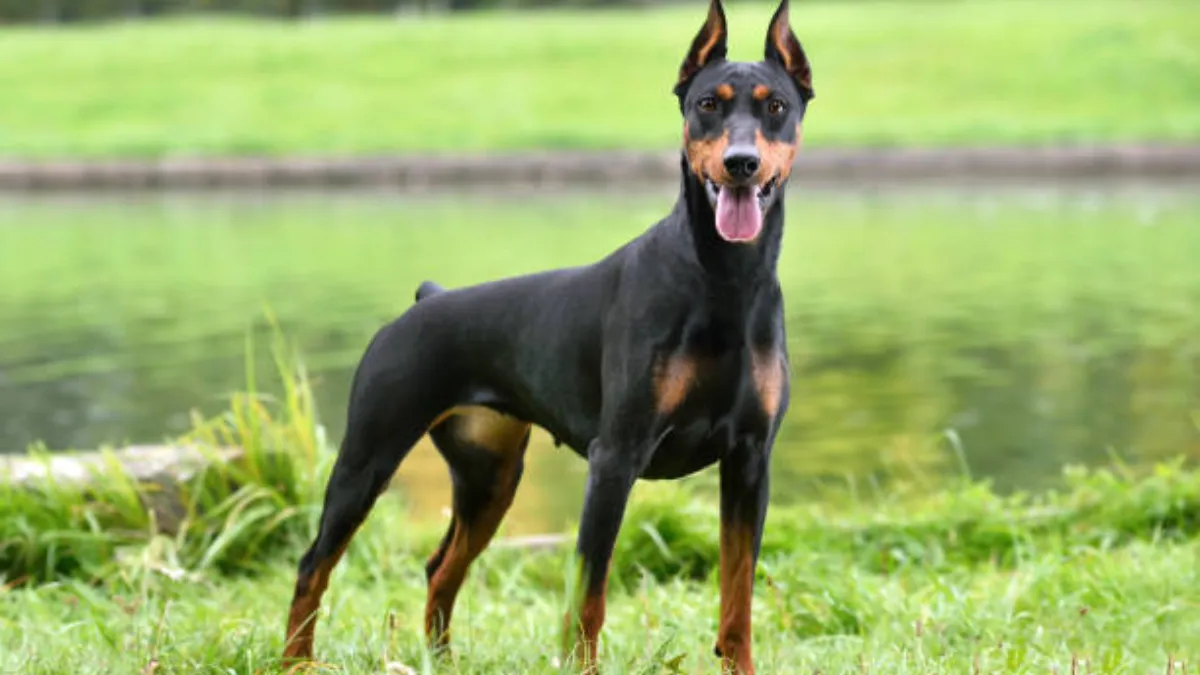
Miniature Pinschers are generally less expensive than Dobermans. The cost of a Miniature Pinscher can range from $500 to $2,000, while the cost of a Doberman can range from $1,500 to $5,000.
In addition to the initial cost of the dog, there are other costs associated with ownership, such as food, veterinary care, and grooming. Miniature Pinschers are smaller and require less food than Dobermans, but they still require regular veterinary care and grooming.
Overall, it is important to consider the costs and responsibilities associated with owning a dog before making a decision.
Conclusion:
In conclusion, the question "Are Miniature Pinschers Related to Dobermans?" leads to an intriguing exploration of their genetic connection and shared characteristics. Despite their similar appearance, these breeds are not direct relatives. While both Miniature Pinschers and Dobermans belong to the Pinscher family, they have distinct histories and purposes.
Miniature Pinschers, also known as Min Pins, are believed to have originated in Germany, where they were bred for ratting and as companions. On the other hand, Dobermans were developed in Germany by Louis Dobermann as guard dogs and companions, with a mix of breeds including the Rottweiler, Weimaraner, and Greyhound.
Although they share some physical traits and temperament characteristics, such as alertness and intelligence, Miniature Pinschers and Dobermans are separate breeds with their unique attributes and requirements.
Understanding the relationship between Miniature Pinschers and Dobermans provides valuable insight into their backgrounds and can aid prospective owners in making informed decisions about which breed best fits their lifestyle and preferences.